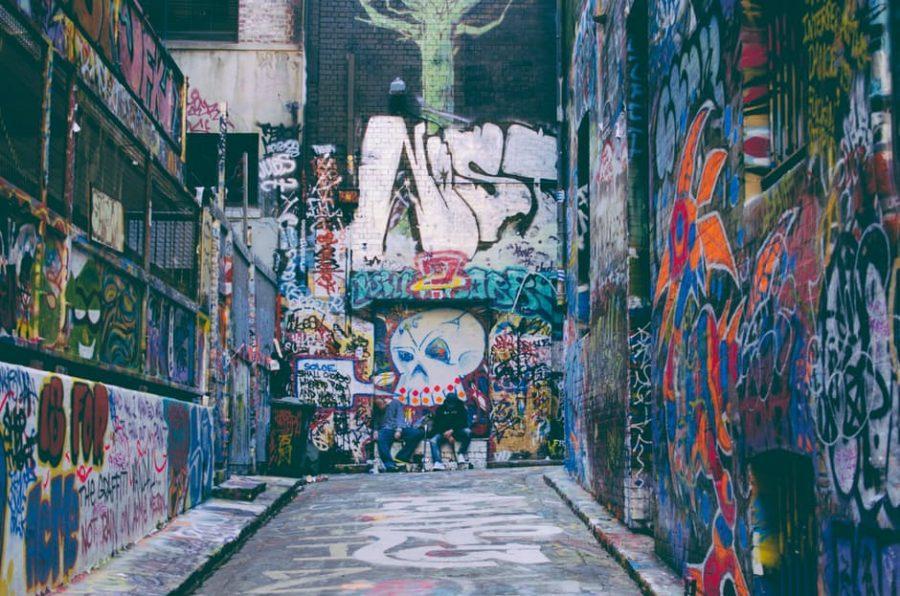Pop culture continues political trends
From the first Muslim man to receive an Oscar, to the first movie about a queer character winning best picture, the 89th Academy Awards was full of firsts.
Nominations this year included “Moonlight,” about a gay black man, “Hidden Figures,” about three black women who worked for NASA, and “Lion,” a film about an Indian man finding his family.
The Oscars, in other words, were very political.
“Media replicates life,” said senior Leah Whetten-Goldstein. “Life is political. Media is political. Therefore, films will also be political. These films, specifically, are being called out for being more political. I think that’s a good thing.”
The best foreign film went to “The Salesman,” an Iranian film. The film’s director, Asghar Farhadi, though, was not at the Oscars.
He chose to protest President Donald Trump’s policy banning citizens from seven predominantly Muslim countries from entering the United States, including Iran. The policy has since been overturned.
“My absence is out of respect for the people of my country and those of other six nations whom have been disrespected by the inhumane law that bans entry of immigrants to the U.S.,” said Anousheh Ansari, an Iranian-American engineer, who read Farhadi’s acceptance speech at the Oscars.
This drew attention to the issue of Trump’s policies for many.
“It’s a shame,” said Assistant Professor of Political Science Robert Duncan. “If you’re not a Native American Indian, you’re a freaking immigrant in this country, so enough of this BS, blocking people from coming in.”
“Zootopia,” a Disney movie that deals with themes like racism and discrimination, won the Oscar for best animated feature.
“I feel that any kid, no matter what their race, should be introduced to race and should have a conversation about race,” said Whetten-Goldstein. “Every kid has a race, no matter what they are, and every kid, especially in America, is going to interact with other races.”
It is not just movies that have been drawing our attention to political issues. Television shows like “Jane the Virgin” and “Modern Family” delve into issues of race, gender, class and the LGBTQIA community.
However, these shows, both of which are comedies, do not always look at the deep impact of political issues on these identities. “Jane the Virgin,” for example, deals with what it means to be undocumented, though some would argue it does not do so in a meaningful way.
“In the real world, it’s not taken that slightly,” said sophomore Dariana Vargas. “It’s a big deal … That’s one of the biggest issues I find in the show.”
Characters also predominantly speak English, which is not always reflective of Hispanic households.
“Yes, there are interactions in Spanish, but the characters speak English,” said Vargas.
Not only does television reflect the culture, but one can also see how it impacts it.
In a 2016 study by The New York Times, researchers found that people who watched shows such as “Modern Family” and “Family Guy” were more likely to vote for Democratic presidential candidate Hillary Clinton while people who watched programs like “Duck Dynasty” and “Fast N’ Loud” were more likely to vote for Republican candidate Trump.
Of course, the television and movie industries have reflected political messages in the past. In the 1970s and 80s, “Good Times,” “The Jeffersons” and “The Cosby Show” were three of many shows to feature predominantly black casts. In 1997, “Ellen” became the first show to depict a lesbian main character.
Regardless, movies and television shows as a whole are becoming even more diverse. This month, Asia Kate Dillon became the first actor to depict a non-binary character in Showtime’s “Billions.”
Netflix shows have also had an impact.
Shows staring strong female leads such as “Jessica Jones,” which has a 93 percent approval rating on Rotten Tomatoes, are very popular. Shows with leads of color like “Luke Cage,” which has a 96 percent approval rating on Rotten Tomatoes, are seeing similar trends.
As with streaming sites, media that has not been widely available before has become much more accessible with technology. One such example is Broadway plays, the most popular of which in recent years has been “Hamilton,” a show with a cast of predominantly actors of color done in almost entirely rap and hip-hop.
“Lin (Manuel-Miranda) has repeatedly said, and this is so true, that you can fit so many more words into each measure of music when you’re using rap,” said Assistant Professor of Religious Studies Jill Peterfeso. “So the form, hip-hop, fits the function, Hamilton’s verbose genius, beautifully.
“From my perspective as an historian of America and American religion specifically, it’s awesome to me that a musical that’s already so long, nearly three hours, is so jam-packed with ideas.”
Between Broadway, television and movies, the public is constantly introduced to diversity and new ideas.
“I hope that folks will see how much work people of color do that doesn’t get recognized by the public,” said senior Ellie Weiner. “This is especially true with folks who do organizing work and other emotional labor.”









